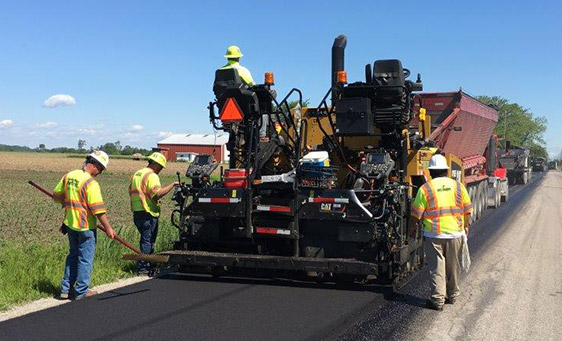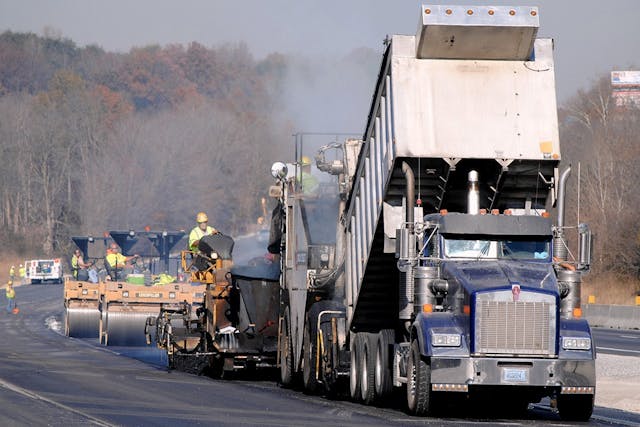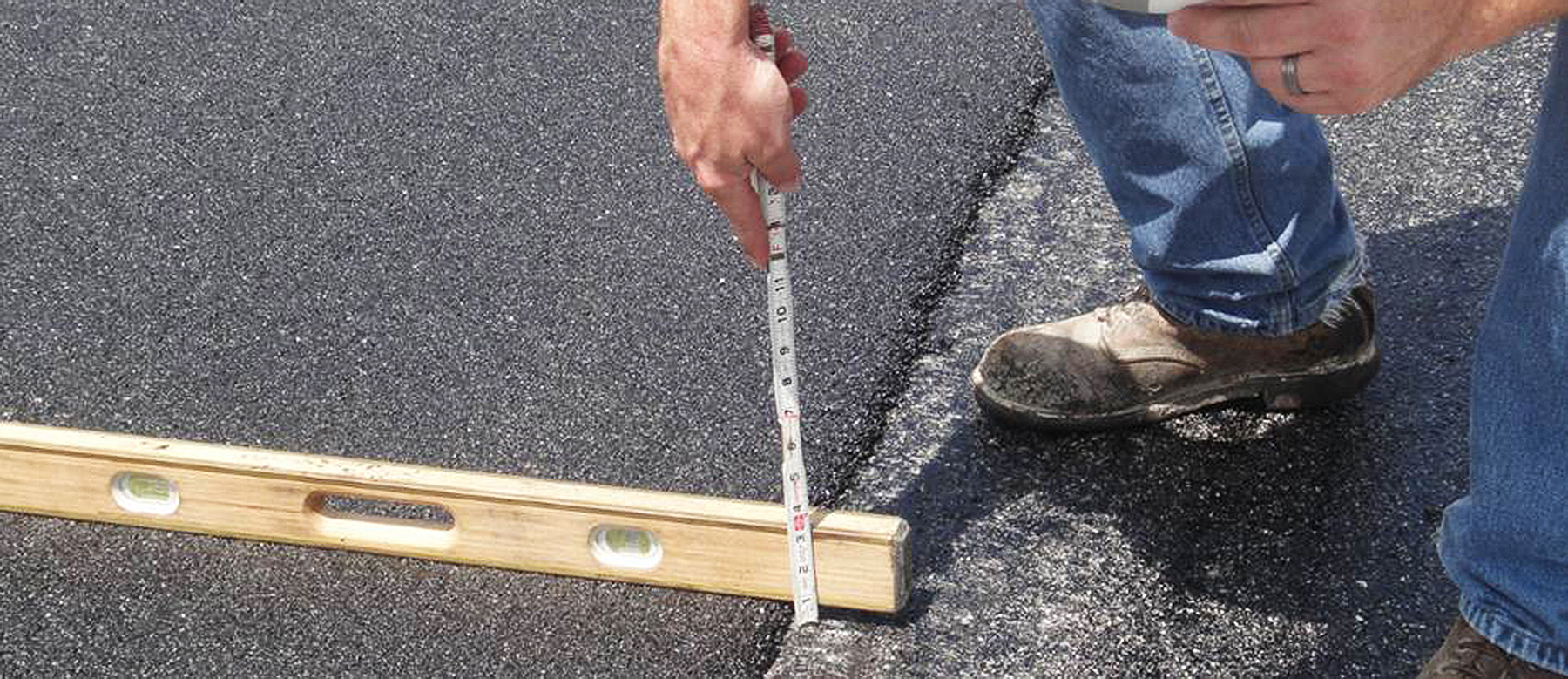Change Your Residential or commercial property's Landscape with Hot Mix Asphalt Paving Excellence
Change Your Residential or commercial property's Landscape with Hot Mix Asphalt Paving Excellence
Blog Article
Opening the Tricks of Warm Mix Asphalt Modern Technology
Checking out the depths of warm mix asphalt modern technology reveals a globe where accurate solutions and careful procedures converge to form our roadways and framework. The combination of fillers, aggregates, and binders isn't merely a construction job but a tactical orchestration of durability and performance.
Importance of Warm Mix Asphalt
Hot Mix Asphalt plays a crucial role in contemporary facilities advancement because of its sturdiness and cost-effectiveness. As one of the most typically made use of leading material for roadways, freeways, and car park whole lots, Warm Mix Asphalt supplies a series of benefits that add to its relevance in construction projects. One key advantage is its capability to hold up against rush hour loads and extreme weather, giving a dependable and lasting surface for transport networks. Furthermore, Warm Mix Asphalt is cost-effective in both preliminary building and construction and lasting upkeep, making it a preferred choice for lots of framework projects.
The toughness of Warm Mix Asphalt stems from its structure, which consists of accumulations, binder, and filler products that are thoroughly picked and blended to satisfy certain efficiency needs. This specific mix results in a solid and versatile pavement that can sustain regular usage without substantial deterioration. Furthermore, Hot Mix Asphalt is 100% recyclable, additional improving its sustainability and environmental advantages. On the whole, the relevance of Hot Mix Asphalt in facilities advancement can not be understated, as it remains to be a foundation of modern-day construction practices.
Elements of Asphalt Mixes
The structure of asphalt blends contains meticulously picked accumulations, binder, and filler products that are vital for accomplishing particular efficiency needs. Aggregates are the primary component of asphalt mixes, offering strength and security. These accumulations can be natural, such as crushed rock or smashed stone, or artificial, like recycled materials from old pavements. The binder, usually asphalt or asphalt cement, holds the aggregates with each other and gives adaptability and longevity to the mix. The option of the binder is important as it straight influences the mix's efficiency in different climate condition. Fillers, such as hydrated lime or Rose city cement, are utilized to improve the mix's workability and aging resistance. Angled Parking.
The combination and percentage of these components play a significant duty in establishing the quality and efficiency of the asphalt mix. Designers meticulously develop the mix to fulfill certain needs, taking into consideration aspects like website traffic volume, climate conditions, and sidewalk life-span. Correct choice and balancing of accumulations, binder, and fillers are important for developing durable, lasting asphalt pavements.
Combining and Production Techniques

When the aggregates are picked, the binder, frequently asphalt cement, is added to bind the products with each other. The binder's top quality and quantity significantly influence the mix's flexibility, resistance, and toughness to environmental variables. Additionally, fillers like hydrated lime or Rose city concrete might be incorporated to improve certain characteristics of the asphalt mix, such as its workability or wetness resistance.
During production, the aggregates and binder are heated up, normally in between 250-325 ° F(121-163 ° C ), to assist in blending and guarantee appropriate covering of the aggregates. The blending procedure should be comprehensive to accomplish an uniform mixture that advertises the preferred efficiency qualities of the asphalt. Various methods, such as batch blending or drum mixing, are utilized to attain constant and top notch asphalt blends for construction tasks.
Variables Impacting Asphalt Performance
Variables influencing asphalt efficiency include a variety of variables that influence the resilience, long life, and general high quality of asphalt sidewalks. One vital factor is the high quality of materials used in the asphalt mix.

Ecological problems likewise affect asphalt performance. Temperature level variations, moisture seepage, and web traffic tons can all impact the architectural honesty of the sidewalk. Style considerations, such as pavement thickness and drainage, are vital in ensuring the lasting performance of the asphalt pavement. By meticulously considering these service providers, engineers and variables can optimize asphalt performance and improve the service life of pavements.
Lasting Practices in Asphalt Technology

WMA permits for the manufacturing and placement of asphalt mixes at lower temperature levels compared to conventional hot-mix asphalt, resulting in minimized power usage and greenhouse gas emissions. The use of permeable asphalt mixes can assist mitigate stormwater drainage problems by enabling water to infiltrate through the sidewalk and right into the ground, promoting natural water filtering and reenergize processes.
Conclusion
To conclude, warm great post to read mix asphalt innovation plays a crucial function in modern infrastructure growth as a result of its resilience and cost-effectiveness. By carefully stabilizing components, employing correct blending strategies, and considering various variables, engineers can produce top quality asphalt mixes that endure heavy traffic tons and harsh weather conditions. Embracing lasting techniques, such as utilizing warm-mix innovations and recycled products, better boosts the environmental kindness of asphalt innovation.
Mixing and production methods in hot mix asphalt modern technology entail the accurate combination and processing of accumulations, binder, and fillers to create a high-performance and long lasting asphalt mix.Elements affecting asphalt performance encompass an array of variables that influence the longevity, longevity, and overall high quality of asphalt pavements. Sustainable methods in asphalt modern technology include numerous campaigns aimed at minimizing the environmental effect of asphalt manufacturing and paving procedures. By including redeemed asphalt pavement (RAP) and recycled asphalt tiles (RAS) into new asphalt blends, the market can significantly minimize the consumption of raw materials and power, while likewise lowering land fill waste.
WMA allows for the production and positioning of asphalt mixes at reduced temperature levels contrasted to conventional hot-mix asphalt, resulting in reduced energy usage and greenhouse gas emissions.
Report this page